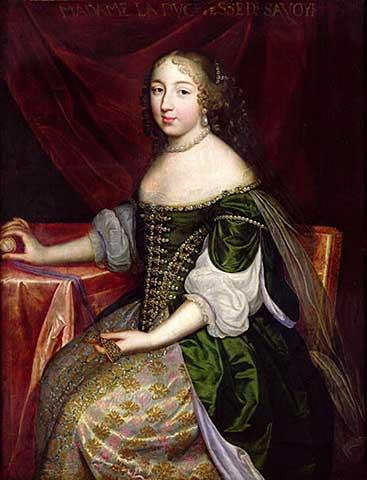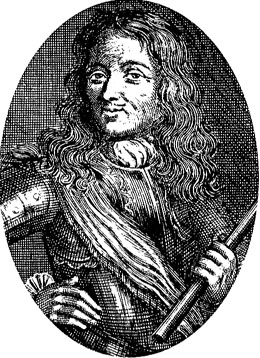Louis XIII
Louis XIII succeeded to the French throne shortly before his ninth birthday and his reign lasted 33 years. It was full of intrigues, wars and seemingly endless worries about not being able to produce an heir.

The future Louis XIII was born on 27 September 1601 as the first child and son of le bon roi Henri IV and his wife Marie de Médicis. Henri IV and Marie were not yet married a year, as Louis was born. It was Henri’s second marriage. Before he married Marie, in October 1600, he was married for 27 years to Marguerite de France aka la reine Margot. While Henri produced several illegitimate children during this time, he and Margot did not have any children… at least not together.
The lack of an heir was one of Henri’s reasons to get his first marriage annulled in order to marry again… and it worked out. The Kingdom rejoiced as the future Louis XIII was born at Fontainebleau. As the oldest legitimate child of the King, Louis became Dauphin de France upon his birth. He was installed, together with his own household, at Saint-Germain-en-Laye in November 1601. There, he lived together with his illegitimate siblings under the care of Françoise de Montglat. Madame de Montglat had been made gouvernante des enfants du roi in 1600 and promoted to gouvernante des enfants royaux 8 days before the birth of Louis, thus it was her job to look after all children, legitimate and illegitimate, of Henri IV. According to L’Estoile, Madame de Montglat was not the kindest of persons.
Le bon roi liked it merry between the sheets and had quite a few illegitimate children. Marie de Médicis did not quite like that her son, should grow up among the royal bastards. The same applied to Marie’s other children by Henri: Élisabeth, born in 1602; Christine-Marie, born in 1606; Nicolas-Henri, born in 1607; Gaston, born in 1608; and Henriette-Marie, born in 1609.
Little Louis adored his papa, his maman not so much. Marie de Médicis often acted cold around her children and generally appeared to be a bit un-affectionate, but was not entirely uncaring about them. Henri on the other hand, loved all his children the same and made not really a difference between them. They were his children, no matter if legitimate or illegitimate. He insisted they all call him papa, instead of the customary Monsieur. And so, while Marie only hesitantly embraced little Louis, Henri allowed him to pull on his fine beard, sometimes so hard that it hurt. Little Louis was also quite fond of pulling the moustache of Henri de Lorraine, which was without doubt a very fine specimen of a moustache.
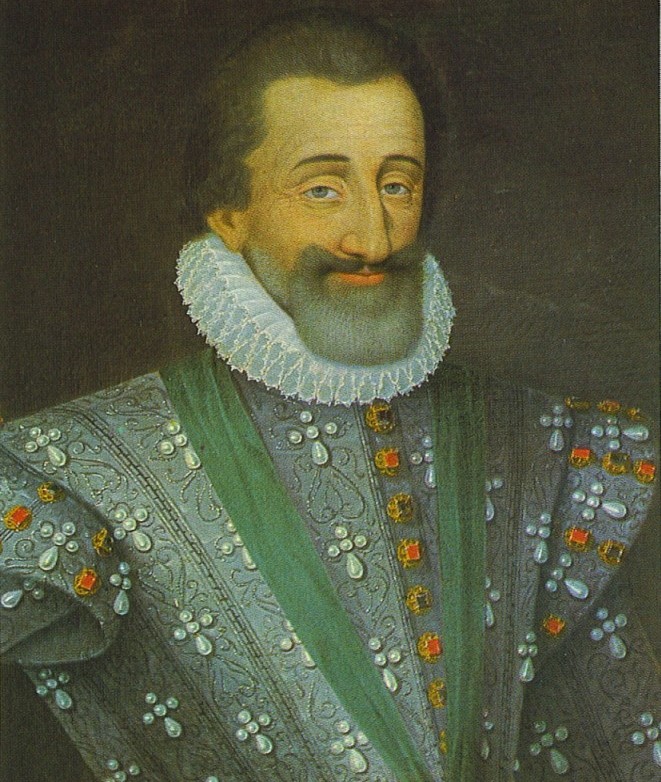
Henri’s affection for little Louis did not spare the Dauphin from whipping… and that happened quite often. Usually Madame de Montglat, who little Louis called Mamenga, would perform the punishment, but Henri also did it himself on occasion. Louis was punished for copying the at times quite un-regal and rude language the adults around him used, for being cheeky or for not doing what he was told.
One time he was whipped for crushing the head of a living sparrow. One time for having a musket fired at someone he did not like. One time for working himself in a frenzy, because he did not like how his papa did only pay him a brief visit that day. One time he was he was punished for becoming angry with his father teasing him: Henri told Louis to take his hat off, Louis had difficulties with it, Henri did it for him, which annoyed Louis. Henri then also took Louis’ little drum and drumsticks, Louis, quite sad about it, demanded them back. Henri then lifted him up by the arms in a manner that resembled Jesus on the cross, which did hurt Louis. He was quite angry and also sad, spent the next hour crying, refused to be embraced, for all of it he was punished in the end.
Henri IV believed that having his son feel the rod often, was actually good for him, since he himself had been whipped often as a child and, so he said, it did him no harm and was good for him. But little Louis was way more sensitive than little Henri was. The Dauphin was prone to mood swings and felt unjustly treated by it all. Sometimes, he got so angry over things that he actually fainted on the spot.
If the Dauphin was in a good mood, he was the loveliest child to be around. He enjoyed music and often had the royal musicians play for him. He also loved to dance and sing, or amused himself with drawing. Louis started to play the lute as he was three years old. Later, it earned him the nickname roi des instruments, because he composed music for the lute himself, like in case of the Ballet de la Merlaison and the Ballet de la chasse au merle. He only cared little for history and the sciences, nor did he care much about writing or reading. What Louis really loved as a child was horses and to ride out, to hunt and go hawking or to amuse himself by watching the guards parade.

The Dauphin had always been a bit weakly as a child. He had smallpox and suffered, like his brother Gaston, of adenoid growths. He was an extreme stutter. According to Sir Edward Herbert, Louis “would sometimes hold his tongue out of his mouth a good while before he could speak so much as one word” and had a “a double row of teeth“.
Henri IV and Marie did not get along too great. Marie had issues with Henri spending time in the beds of other women, for which he was nicknamed le vert galant. They often clashed, had arguments and Henri did not provide her with the money for her expenses she demanded, which lead to more arguments. Henri also delayed Marie’s coronation as long as he was able. Marie was eager to be crowned, but Henri saw no reason for it, until it was quite clear that France might go to war soon. If that was the case, Marie would have to act Regent during Henri’s war related absence. Thus preparations were made for Marie to be crowned at Saint-Denis on 13 May 1610.
The following day, May 14, Henri’s carriage got stuck in a coronation related traffic jam in the rue de la Ferronnerie. A Catholic fanatic, François Ravaillac, jumped on the carriage and stabbed le bon roi Henri. The carriage rushed to the Louvre as fast as possible, but it was too late for Henri.
The Dauphin, not yet nine years old, succeeded to the crown as Louis XIII. The transition from one King to the next, always happens immediately, meaning as soon as the previous King passes away, and no official statement or coronation is actually needed, based on the belief that a King might die, but the Kingdom itself and the Kingship, granted by God, never dies. It passes on the to next senior male in line at once.
Since Louis was just eight years old and too young to rule himself, France needed a Regent. The freshly crowned Marie de Médicis took that role. In the meanwhile, the new King was sick with sorrows. He could not understand the sudden passing of his father, craved his affection, a affection his mother was not able to give him, and pushed everyone away.
Marie tried to rule the Kingdom in a moderate way, but was very much influenced by her Italian lady-in-waiting Leonora Dori Galigaï. Galigaï was married to the Italian Concino Concini, who although he had never fought a battle was made a Marquis and Marshal of France. He had a reputation of being unscrupulous. Galigaï was known to be quite corrupt. She was prone to accepting bribes and at some point performed white magic spells on behest of Marie de Médicis. It was believed that Galigaï, who suffered of strange fits and spasms, was actually possessed by a demon… Those fits and spams were probably signs of epilepsy.
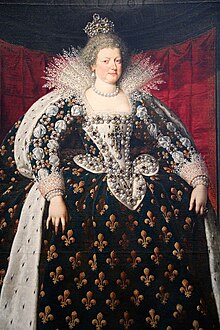
While Marie kept most of her husbands Ministers, the Concinis probably had a hand in the dismissal of Henri IV’s most skilled Minister, the Duc de Sully. Being the daughter of a Habsburg Archduchess, Marie overturned the traditional anti-Habsburg and anti-Spain as well as the slightly anti-Italian stance of France. As devout Catholic, Marie was prone to Vatican influence too, which made the Roman Catholic Church attempt to mingle in French politics by trying to get Marie to act in favour of a suppression of Protestantism in France.
The young King was not happy about it at all and even less happy as his mother did not give up her Regency as she was supposed to. By tradition, a King of France is officially considered old enough to rule at thirteen. Once the King turns thirteen, a Regency is supposed to end and the King will rule the Kingdom himself…. Marie did not think of giving her Regency up yet as Louis turned thirteen. Instead, Marie declared that her son was “too weak in body and spirit” to rule… she also dismissed him from the council. Louis was furious and felt humiliated.
Louis missed his father terribly and felt more humiliated by his mother and her entourage by the day. What hit Louis especially hard, was that his maman was not willed to follow his father’s plans in regards of who should be Louis’ bride. Henri IV had in mind to marry Louis to Nicole de Lorraine, the heiress of Lorraine and Bar. This marriage would have peacefully extended the border of France to the Vosges… and mostly likely spared both Lorraine and France a lot of future trouble. Instead of a marriage to Nicole de Lorraine, Marie decided to marry her son to the Spanish Anne d’Autriche and her daughter Élisabeth to the heir to the Spanish throne. While those marriages secured peace with Spain, Louis did not like it at all. He thought such a marriage was against the wishes of his cherished father and that he was pretty much married to the hereditary enemy…but there was nothing he could do about it.
And so a double marriage by proxy took place on 18 November 1615, after which both Anne and Élisabeth set out for their new homes. Louis married Anne in person on 21 November in Bordeaux. Bride and groom were both fourteen years old. The very pious Anne had no idea what she had to expect… Louis had no idea what to do either. Yet in order to prevent anyone from questioning the legality of the marriage, Marie insisted Louis should perform his duties as a husband on his wedding night. He managed, but the events of this night left him traumatised and with a deep grudge towards his mother. He did not share his wife’s bed again for the following four years. Poor Anne quickly became an outsider at the French court. Its customs were strange to her and although everyone treated her with respect, nobody seemed to care much for her. On top of that, although Anne was de facto Queen of France, Marie de Médicis did not even think of giving that title up for herself. Marie continued to call herself Queen of France and showed no deference whatsoever for Anne.
 Louis, in the meanwhile, became more and more fed up with his maman and her corrupt friends…. and so did others. The Prince de Condé, who was already in rebellion against the Regent in 1614, took up arms in 1616 again. This time the Huguenots also sided with Condé and Marie was not able to assert her authority. The Regent and Condé settled the matter in the Treaty of Loudun, which granted him power in government, but did not remove the universally hated Concini, who had by then a private army of 7,000 soldiers, from the government. This in turn, lead to more of the Princes of the Blood to rebel against Marie and Concini. Louis sided with his mother in this case, thinking that since the Huguenot leaders dared to side against the crown, they could never be trusted… nor could those Princes be trusted. Thus Louis helped his mother to arrest Condé in order to protect Concini and it backfired. Even more nobles joined the rebellion.
Louis, in the meanwhile, became more and more fed up with his maman and her corrupt friends…. and so did others. The Prince de Condé, who was already in rebellion against the Regent in 1614, took up arms in 1616 again. This time the Huguenots also sided with Condé and Marie was not able to assert her authority. The Regent and Condé settled the matter in the Treaty of Loudun, which granted him power in government, but did not remove the universally hated Concini, who had by then a private army of 7,000 soldiers, from the government. This in turn, lead to more of the Princes of the Blood to rebel against Marie and Concini. Louis sided with his mother in this case, thinking that since the Huguenot leaders dared to side against the crown, they could never be trusted… nor could those Princes be trusted. Thus Louis helped his mother to arrest Condé in order to protect Concini and it backfired. Even more nobles joined the rebellion.
One of Louis XIII’s closest friends at that point was Charles d’Albert. They shared a common love for hunting and hawking. Thus Louis made him grand fauconnier de France, a very prestigious office. Charles had his own agenda as well. He was not fond of the Regent, nor was he fond of Concini. He managed to persuade Louis that it would be the best for France, if he were to break with his mother, side with the rebelling Princes, get rid of Concini and finally assume power himself.
Louis did just that. On 24 April 1617 in a coup d’état against his own mother and government, he ordered the immediate exile of Marie de Médicis, dismissed her favourites from the government and took matters in his own hands.
Concino Concini was arrested by the Duc de Vitry and was supposed to be imprisoned. Apparently Charles d’Albert spoke against having Concini killed, but Louis XIII gave orders to shoot Concini if he should resist his arrest. According to the official story, Concini was seized upon entering the Louvre and called for help, which was taken as a sign of resistance by those ordered with his arrest. Concino Concini was shot on the spot. His wife Galigaï, was arrested as well and brought to Blois, where also Marie de Médicis was exiled to. Leonora Dori Galigaï was charged with lèse majesté, dabbling in black magic, witchcraft and judaization. She was found guilty of it all and of having bewitched Marie de Médicis. On 8 July 1617, Galigaï was beheaded and her body burned at the stake at the Parisian Place de Grève.

Charles d’Albert, as Louis XIII’s favourite, received parts of the Concini fortune and rose to power himself. In September 1617, he married Marie de Rohan, who later became the infamous Duchesse de Chevreuse. Together, they were quite the power-couple and ruled the court. Charles on the side of the King and Marie on the side of Anne d’Autriche.
…but the whole Marie de Médicis affair wasn’t yet over. Marie, by then 47 years old, managed to escape Blois in 1619, with the help of a rope ladder via a 12 metre high wall. She then, with the aide of various nobles, took refuge in the château d’Angoulême… and from there, she rose an army against her son and rightful King. Faced with an civil war, Louis XIII and Charles d’Albert turned to another person who had been exiled during the Concini affair, Armand-Jean du Plessis de Richelieu. Louis and Charles employed Richelieu to negotiate a sort of arrangement between King and Queen-Mother to avoid bloodshed. It was the traité d’Angoulême, in which Louis granted several towns to his mother, but banned her from attending council. Marie agreed to the terms, but it took not long until she changed her mind and rose another army against her son.
And so, the Bataille des Ponts-de-Cé happened. Marie, aided by some of the Grands, like the Duc de Vendome, who was Louis XIII’s half brother, the Duc d’Epernon, the Duc de Retz, the Duc de Nemours, the Duc de Montmorency, the Comte de Soissons, the Duc de Longueville, the Maréchal de Boisdauphin and the Duc de La Trémoille, managed to take many areas in France, which allowed her control of major cities. Not good for Louis. Louis gathered the remaining royal troops to face what was called the l’armée de la Reine-Mère, the latter was superior in numbers, but so much pressure was put on the Duc de Retz and his 1,500 men infantry by the royal troops, that Retz decided to withdraw with all of his men. The Bataille des Ponts-de-Cé turned into the Drôlerie des Ponts-de-Cé as Marie’s remaining troops where now without leader and overrun by the royal troops.
It was a total defeat for Marie de Médicis. Louis made peace with his mother in the following traité d’Angers. Aware that Marie might raise another army and fearing that there will be no end to the plotting if she continues to be exiled from court, Louis allowed Marie to return to court. Not just that, he also forgave her and all the Grands who rose arms against him. After Charles d’Albert’s sudden death in 1621 and due to the influence her protégé Richelieu had gained with the King, Marie even managed to get back on the royal council.

Being at peace with his mother, for now, the King turned his attention to other things… one of them being that by now, in 1620, after five years of marriage, there was still no heir in sight. By then, Louis shared Anne’s bed several times. The first time he did so was in spring 1619, after pretty much being forced to do so by Charles d’Albert. Louis and Anne got along a bit better by then too, thanks to Charles d’Albert, who worked constantly improving their cool relationship. After Charles’ demise, the couple remained on good terms until 1622. Anne, not knowing that she was pregnant with their first child, stumbled and fell in the ill-lit galleries of the Louvre, while playing chase with her ladies. Shortly after, she was taken to bed with a strong belly-pain and miscarried a little over a month old embryo.
Louis was furious and accused Anne of being careless. Their relationship cooled down again and did not improve again until many years later. (You can read more about Louis’ and Anne’s relationship and baby-struggle here.)
Something Louis had to take care of too, he thought, were the Huguenots, especially those of Béarn, who had defied a number of royal decisions. The King set out for Pau, the city where his father was born, to restore the Catholic religion as official religion. Henri IV had granted the Huguenots freedom of religion with his Édit de Nantes, but Louis desired all of France, to which Pau, capital of the province Béarn, belonged, to be Catholic. Louis was successful in reestablishing the Catholic faith as official religion of Béarn, but it led to other Huguenot provinces to take up arms under the leadership of Henri de Rohan, Duc de Rohan. Eight years of massacres and bloodshed followed.
In 1621, the King and Charles d’Albert started the first campaign against the Huguenot Rebellion. They laid siege at the Huguenot stronghold of Montauban, but the whole thing did not go as planned. Charles d’Albert had been put in charge by Louis, it was the first time Charles led a military operation, and somehow did not manage to prevent a reinforcement of the Huguenot forces. He then tried to negotiate with the ‘enemy’, with which Louis did not agree at all, saying it was done without his knowledge. Louis had to break the siege, after a large part of his troops succumbed to camp fever. Charles d’Albert moved on and managed to take Monheurt… then died, probably of camp fever.

The Huguenot campaign ended with the paix d’Alès in 1629. Louis was still sans heir by then… but he had gained a capable Minister, Cardinal de Richelieu. Louis XIII was in first opposed to having a single Minister in charge and governed with a set of Ministers. Richelieu entered the game, or rather the King’s council, in 1624 as protégé of Marie de Médicis and a close understanding developed between King and Cardinal. Both had the same vision for France’s future, both agreed on what political course to take, on what was important to achieve what was needed, and while Louis could be a bit hot-headed at time, Cardinal de Richelieu was the opposite. Always composed and seemingly always knowing what to do.
Louis and Richelieu thought it essential for the stability of France to bring an end to the private feuds of the nobility and even more important, to their constant opposition against the crown. This did not go down well with the nobility of course. Richelieu did not have many friends and his anti-Spain stance did not make it better. Meanwhile, Louis’ relationship with Anne reached a new low over the Queen’s rumoured involvements in plots against her husband and Marie de Médicis became more of a problem again by the day.
The final clash between mother and son occurred in November 1630 and is referred to as the journée des Dupes. Marie de Médicis and her supporters demanded the immediate dismissal of Cardinal de Richelieu for the sake of France. There was a lot of tension in the air in regards of Cardinal de Richelieu’s politics and decisions. Louis himself was not sure for quite a while with whom he should side… but in the end, he decided against his mother and for his Minister. It was the end of Marie de Médicis. The Queen-Mother was exiled, this time for good. She never returned to France, never saw her son again, never met her grand-children and died twelve years later in Cologne.
It was a very important event for France, and the first important event to take partly place at Versailles, because Louis XIII’s decision on this day set the course of where France would go, what France would become. He did not just decide between a troublesome mother and a capable Minister. It was a decision about whether cliques and religion should rule the Kingdom, or reason of State should rule. Louis decided for the latter and thus became one of the first examples of an absolute monarch.
The exile of his mother however did not mean that the revolts and intrigues were over. Louis still constantly was in a fight with this or that family member, mostly his brother, who was still heir to the Kingdom. His relationship with his wife was still not great either and nobody really expected anymore that Anne and Louis would produce an heir.
… and talking of Versailles, it is due to Louis XIII that we have the glorious chateau de Versailles today… or rather due to Louis XIII’s love for hunting. He set out nearly every day to hunt, in company of course, and it happened often that Louis forgot the time. The King and his hunting friends then had to look for shelter, because it was too late and they were too far out to return to the current residence. Louis’ friends urged him to build a house somewhere for these occasion. They were a bit fed up to sleep in barns and wanted more comforts. The little village of Versailles was picked, Louis bought some land there and had a little hunting chateau built. It was nothing glorious and Louis wanted everything to be done for as little money as possible, but it provided some comforts. The château was later extended under Louis XIII to host a couple more people and the royal family… until Louis XIV came along.

Unlike his papa, Louis was not a mistress kind of person either. Louis XIII had two good female friends, Marie de Hautefort and Louise de La Fayette, with whom he had platonic relationships, but no mistresses. What Louis had, was male favourites and this, of course, gave rise to rumoured man-to-man-love.
Over the course of his reign, Louis was close to several gentlemen, who shared his love for outdoor activities like hunting. There was the Duc de Luynes, the Seigneur de Toiras, Monsieur Baradas, Monsieur de Saint-Simon, and the Marquis de Cinq-Mars. All these men have another thing in common, they all rose very quickly once the King laid eyes upon them… and all of them fell from grace once they started to abuse their gained power.
We can’t travel back in time to check what went on in Louis’ bedroom. There is no evidence Louis ever had a mistress, there is no evidence Louis shared his bed with men…. but in regard of the latter, there are rumours. Rumours of Louis being interested in males as a teen, being very fond of certain servants and soldiers. Some of these rumours are even quite juicy, like that of Louis and a certain soldier named Descluseaux. According to this rumour, Descluseaux made Louis stand guard in front of his own rooms at night and would then appear, arrest the King and carry him off to bed. Then there is a rumour stating that one night, Louis sent the Marquis de Cinq-Mars to undress, who then returned dressed up like a bride. Louis cried “To bed, to bed!“, took the hands of the Marquis, kissed them and vanished with him.
Louis XIII had developed a certain distrust for his wife over the course of their marriage. First because there was talk of Anne being involved in a plots against Louis, then against the Cardinal, then with Gaston against both, then there was talk of her making marry with the gentlemen, especially with the Duke of Buckingham, and then there was the fact that Anne d’Autriche was Spanish.
Their relationship got even worse as France declared war on Spain in 1635. Louis did not allow Anne any political power, but she was allowed to write her Spanish family and she was in a bit of a odd situation. Her French husband waged war against her Spanish brother, whose wife was her French husband’s sister. In Louis’ mind, this was a overdue necessary war. His papa had planned to go to war with Spain and his death got between that. His mother did not wish for war and turned more Habsburg-friendly… but fact was, that for centuries now France was surrounded by Habsburgs and this was not good for France…. and now was the perfect time to do something, because the Habsburgs were already in a war. It was the Thirty Years’ War, one of the most destructive wars in human history, with over eight million dead due to the war and following violence.
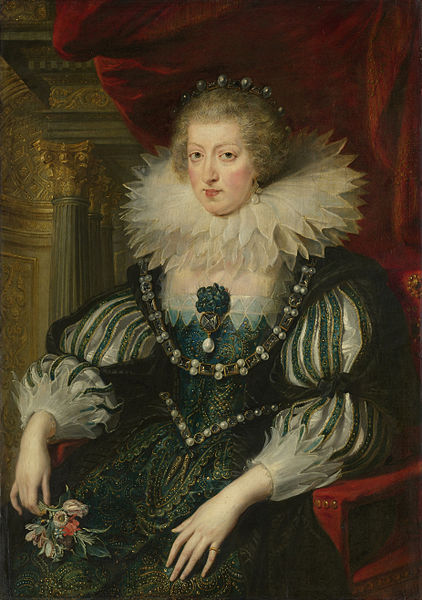
Louis’ and Anne’s relationship declined over her correspondence with Spain. Anne entertained a secret exchange of letters with Spain and some of them were a bit delicate, because they looked like she was trying to involve herself in the war. Cardinal de Richelieu, a very suspicious person, sensed something was going on and ordered an investigation. Anne denied it all in first, but had to admit it in the end. All of this made Louis even more suspicious of her…
During pretty much all his adult life, the lack of an heir gnawed on Louis and was the reason for many plots. A man that can not father a healthy child… what sort of man is that? Should that man be trusted to run a Kingdom? It was one of the reasons why Louis XIII was seen as a weak King by many back then. Also because of his close relationship with the Cardinal. Many said the Cardinal governed King and Kingdom alike.
But then it happened. After three miscarriages, Anne was pregnant again. Louis, who always had health problems, reconciled with Anne after being bedridden due to severe illness. Having recovered, he set out for the hunt and then there was a storm…. sent from God…. Anne became pregnant and a healthy boy was born on 5 September 1638.
Louis rejoiced, as did the Kingdom… apart from Gaston. This healthy son meant a future for France, one that did not involve Gaston as King, and also a divine confirmation, it was claimed, that Louis XIII and his Cardinal were in God’s favour.
Since Louis had a caring papa, one would think he was just as caring when it came to his son, but that was not quite the case and this did not change as a second son, Philippe, was born in 1640. Louis XIII still did not trust his wife either, thus did not wish for her to get involved in the education or upbringing of his sons. Instead of a doting papa, they had a doting maman…. which Louis did not like that much either.
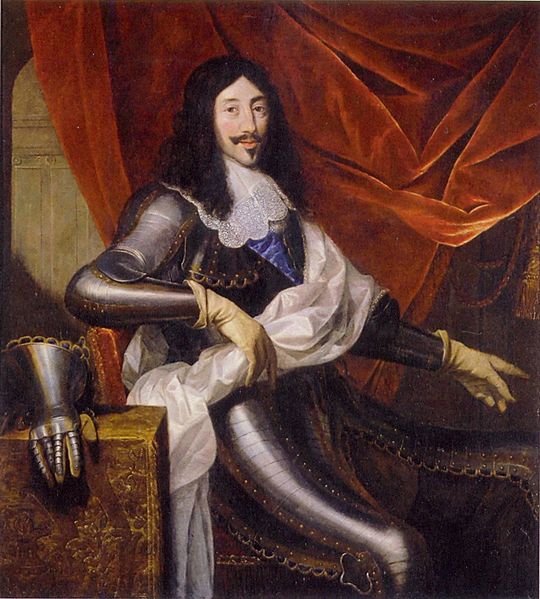
Two years later, in 1642, Louis started to sense that he would probably meet his maker sooner than he would like. His health had never been great, but Louis always made the best out of it and it did not stop him from riding into battle either… but now he grew weaker. The death of Cardinal de Richelieu in December 1642 probably made him even more aware of it. It did not take long until a new Cardinal, Cardinal Mazarin, took the the place of the late Cardinal, but what should become of France once Louis followed Richelieu? Anne d’Autriche would become Regent for their son, the future Louis XIV, so much was clear, but since Louis did not fully trust his wife, preparations had to be made. Louis did not want Anne to be the sole Regent and thus ordered a Regency Council to be set up, with people he chose, once he closed his eyes forever.
By the start of April 1643, Louis fell ill with a terrible colic. Each treatment proposed by his physicians, weakened his body further. In the last years of his life, Louis XIII underwent, on behest of his doctor, Monsieur Bouvard, 34 blood-lettings, 250 purges and 1200 enemas. During this last illness, Louis underwent similar treatments on a daily base. His condition grew worse by the day, but, it was noted, he seemingly refused to die for six weeks. As Louis was on the edge of death, his first-born got baptised, and his wife prepared to take over. Louis, pretty much all skin and bones, asked his children to his death-bed several times and one of these meetings terrified his heir so much, that he locked himself crying in his room.
After six weeks in agony, Louis XIII closed his eyes forever on 14 March 1643, on the very day his father was murdered 33 years ago. The colic which did cost Louis XIII his life, was probably Crohn’s disease. The late King’s body had not yet entered the crypt of Saint-Denis, as his last will was overthrown and his wife proclaimed sole Regent.
Louis le Juste created the foundations of his son’s absolute rule, which would make France a power to be reckoned with and little hunting lodge Versailles, became the centre of Europe.
